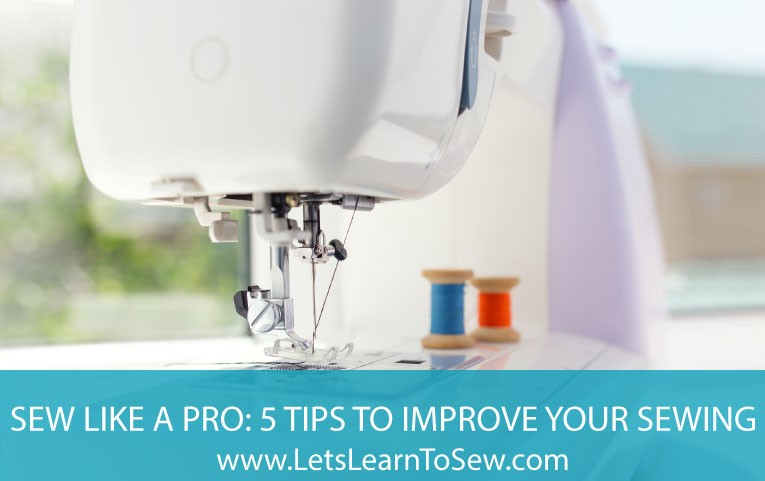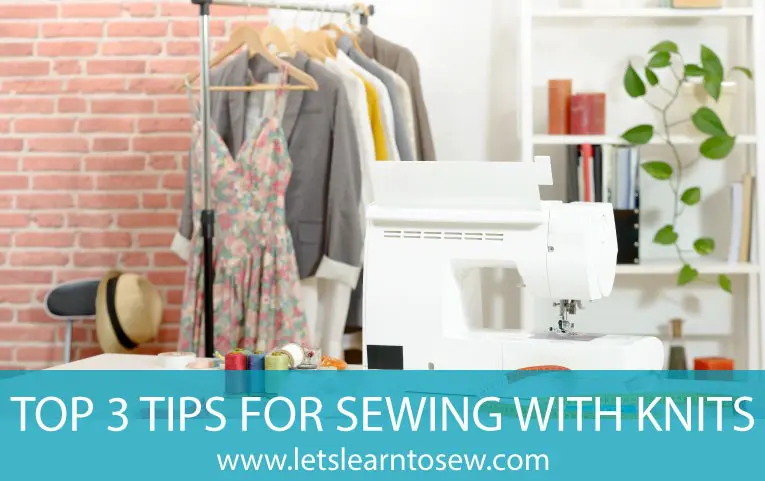For many people today, learning to sew doesn’t mean hand-sewing every dress, quilt, or hem that you touch. Rather, sewing has been introduced to the modern era with the use of sewing machines.
However, if you are going to be using a sewing machine, you need to know how to use it safely. They may not be the most dangerous machine that you ever use but that doesn’t mean that you should throw caution to the wind. In this article, we will look at 10 safety tips that you should employ every time you sit down at your sewing machine to create your next project.
Sewing Machine Safety: 10 Safety Tips To Avoid Injury
1. Learn the Distance
The most obvious risk when you are using a sewing machine is the moving needle that you are feeding your fabric through. The best thing you can do is the easiest step: keep your fingers a safe distance away from the needle. Generally speaking, this is considered about an inch away from the needle at all times.
Of course, there are those times that the fabric you are working with needs some extra guidance. However, do not do this by bringing your fingers closer to the needle. If you head to your local craft store, you can find tools to help guide the fabric that doesn’t put your fingers in danger.
2. Keep Your Hair Out of the Way
If you have long hair, it will be a nightmare if you aren’t careful and allow it to get caught up in the workings of your sewing machine. Unfortunately, when you are working, leaning over your machines to get a closer look, your hair can be a danger if you aren’t careful. Luckily, though, you can easily avoid any mishaps by just pulling your hair back with a hair tie while you work.
3. Concentrate
When you are working on your sewing machine, to stay safe you will need to focus on what you are doing. If you aren’t, it’s easy for an accident to happen such as a simple slip of the hand. To avoid this, only use a sewing machine when you are able to focus on what you are doing.
This also means that if you are under the influence of anything that could affect your focus - such as medication - you might want to avoid the sewing machine until you can focus properly.
4. Make Sure Your Pins and Needles Are Intact
When you are setting your sewing machine up, you are going to want to make sure that any pins and needles that you use are completely whole and undamaged. Not only could a broken needle lead to damage to your machine or the destruction of your fabric, but it could also potentially become a dangerous projectile.
5. Don’t Sew Over Pins
In the same strain as our last tip, you are going to want to make sure that you take pins out of our fabric as you go. Sewing over pins can cause them to break and potentially fly out at you. In addition to the potential danger, though, a breaking pin could also damage your machine or fabric.
6. Use the Right Machine
If you are planning on sewing throw strong or thick fabrics, you might want to consider using an industrial sewing machine rather than a standard household machine. Otherwise, you risk breaking your machine which can lead to dangerous situations.
7. Be Mindful of Electricity
When you are using your sewing machine, you are adding electricity to the mix. So, you need to be careful of the damage electricity can do. You can keep yourself safe by taking simple steps such as not overloading outfits and not using cords that are frayed, cut, or otherwise damaged with your machine.
8. Listen to Your Machine
A theme that you might have noticed as we have gone through these tips is that a broken machine can spell danger. As such, you should make sure to listen for any problems your machine could have. If you hear any rattling or grinding, for example, you should consider taking your machine to get checked out.
9. Service Your Machine
A sewing machine, much like a car, needs regular maintenance. About every 2 years, you should take your machine to get serviced by a professional so you can avoid the mishaps that a broken machine can cause.
10. Turn It Off When Not in Use
Don’t let your sewing machine sit on idly even if you are only stepping away from a project for a minute to avoid any accidents. You should especially make sure the machine is off and unplugged before you start making any repairs - the last thing you want is to have your hand in the machine and for it to cut on.
Annabelle Carter Short is a writer and seamstress of more than 5 years. She splits her time between London and Los Angeles and writes for Wunderlabel. Annabelle is also a craft lover and would like to start online Arts & Crafts business. When not working, she's spending time with her friends or putting pen to paper for her own personal pursuits











Krazy Kabbage
Some useful tips here. I don't own a sewing machine but it's one of those things I want to do someday so I found this post useful and will keeps these tips in mind.
Danielle Lavoie
I have been wanting to get back into sewing (I use to do it all the time with my Mom), thanks for the tips! I will definitely be keeping these in mind when I pull the machine out next.
Luna S
Great list of tips! I've been wanting to learn how to use a sewing machine.
itskathrynjane
What a great list of tips. I absolutely love sewing.
Ioana Minciu
Good tips. This would have been helpful last year when I tried sewing by myself 🙂
Michelle Broadnax
I can't sew, but I remember all the stories my dad would tell me about he and his siblings making their own clothe and the amount of injuries they would get.
Great post! x
Michelle
Seanna Rose
Just picturing getting my hair stuck in a sewing machine... ouch!
Jodie
Hello Margaret. These are very wise tips. Thanks so much for sharing. I particularly found Tip No.10 very helpful. I've included your tips in our latest Top 10 in Craft. https://craftylikegranny.com/3ps-for-craft/ Cheers Jodie 🙂
dianahkristine
Thought of learning the art of sowing and this came in handy
Access Doors and Panels
Educating yourself about avoiding electric shock can help keep you safe and prevent a dangerous accident. Good article with an excellent way of presentation. Keep it up. Thanks for sharing.
Matthew Justin
I tried sewing once and couldn't really get the hang of it. After reading your posts, I think I was doing it all wrong. I use to help my mother make things for the local flea market here and I use to cause more harm than anything lol. Great post and tips.
Macaulay
When I was little, my father would tell me tales of how he and his brothers would make their own clothes, and how many injuries they would sustain. Sewing kits, in particular, maybe rather sharp, thus additional care should be used while using them.
sawsmachine
Amazing list of advice! I've been hoping to gain sewing machine proficiency. thanks for sharing.
Maha Khan
This information is an invaluable resource for anyone passionate about sewing. I appreciate the practical advice provided, making it easy for both beginners and experienced sewers to implement safety measures in their creative endeavors.
Highly appreciate 👍😍